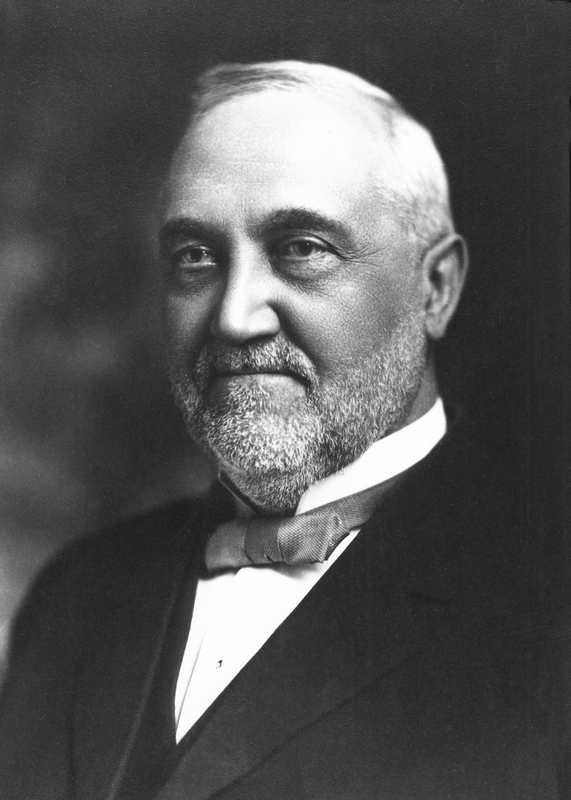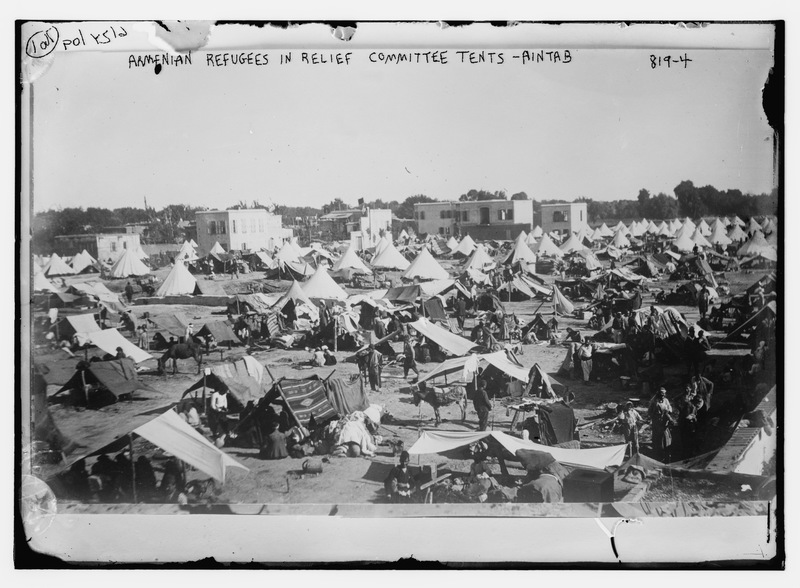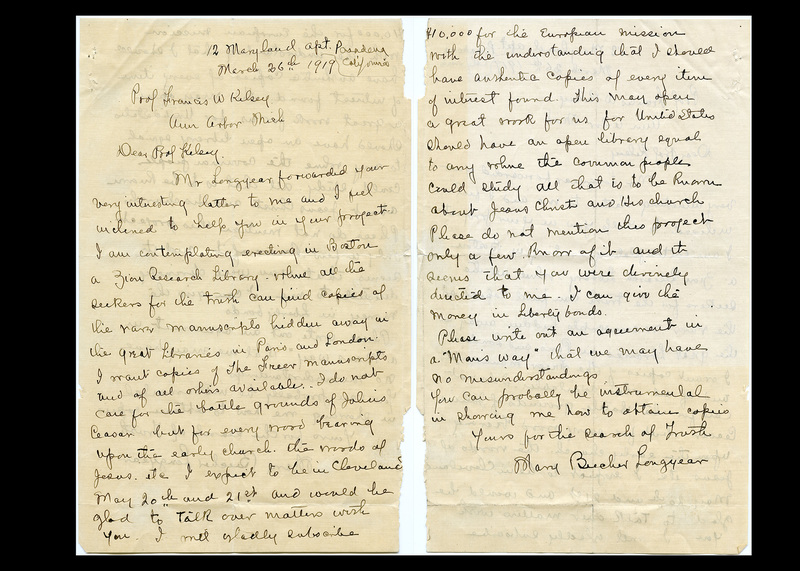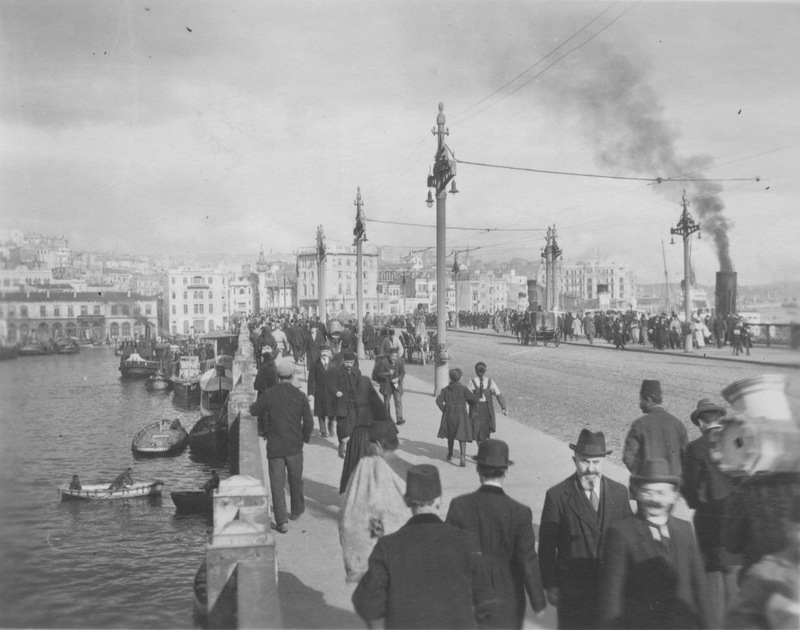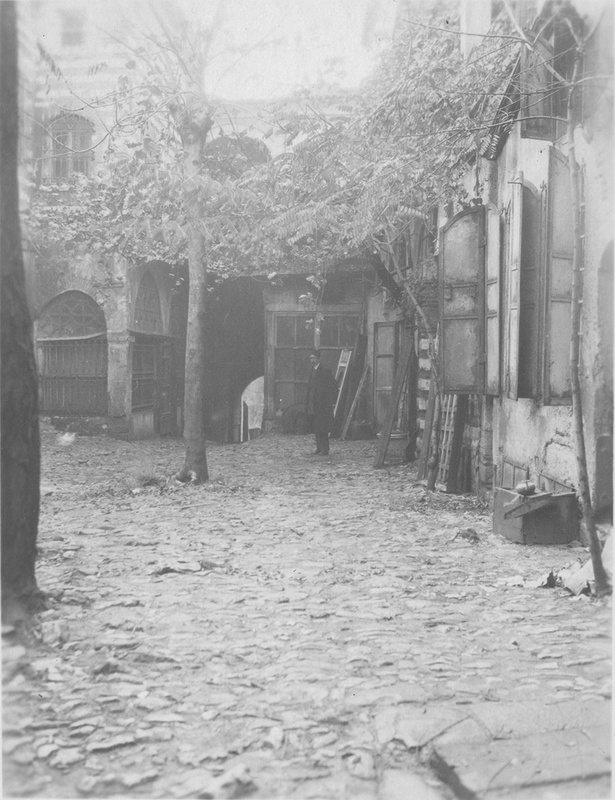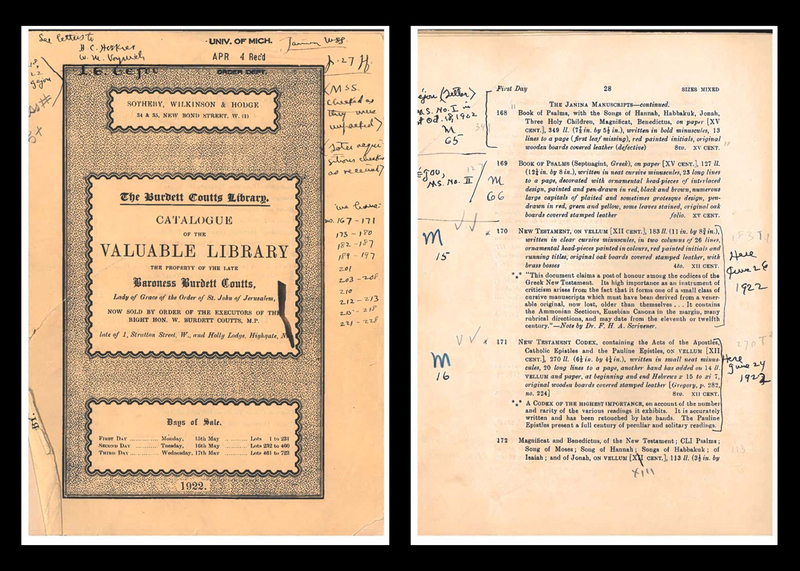The Provenance of the Collection
The library's collection of Greek manuscripts orginated through the efforts of Francis Willey Kelsey, professor of Latin language and literature at the University of Michigan from 1889 to 1927. Kelsey was an advocate of the role of archaeological excavations as sources of artifacts to be collected by American libraries and museums. In numerous letters to donors, colleagues, and university administrators, Kelsey described the four major goals of what would become the First Expedition, a research and collecting journey in Europe and the Middle East between 1919 and 1921.
The first objective of this expedition was a survey and re-examination of Julius Caesar’s battlefield, primarily in France in the aftermath of World War I, but also in Greece, Asia Minor, North Africa, and Egypt. The second was the photographing of ancient monuments and sites for teaching. The third was the study of manuscripts held in European libraries as well as in monasteries in Greece, Constantinople, Palestine, and Egypt. And the fourth was the acquisition of ancient artifacts, biblical manuscripts, and papyri.
Shown above is a black and white portrait of Professor Francis W. Kelsey, wearing a suit and bowtie. The image was taken toward the end of his life by photographer Enoch Peterson. The original photograph is held at the Bentley Historical Library, University of Michigan HS 5944.
Kelsey’s decision to acquire biblical manuscripts in the Middle East was influenced by the humanitarian crisis taking place in that region during and after World War I. Between 1914 and 1918, more than 2.5 million civilians lost their lives on the battlefields of the Middle East or as a result of disease and hunger. Among the civilian casualties were more than a million Armenians who were the targets of a systematic genocidal campaign organized by the Ottoman state in 1915. However, the war did not end in that area when Germany officially surrendered on November 11, 1918.
While the European colonial powers discussed the fragmentation of the multiethnic territories of the Ottoman Empire, the forces of Turkish nationalist leader Mustafa Kemal (1881–1938) fought for independence, eventually announcing the creation of the Republic of Turkey in 1923. The fact that Christian towns and monasteries were being looted and destroyed sounded the alarm among the community of European and American scholars working with ancient and medieval manuscripts. In a 1918 letter addressed to Belle da Costa Greene, librarian of the Pierpont Morgan Library, Kelsey referred to the instability and humanitarian crisis of the Middle East as compelling reasons for the pursuit of manuscripts to be used for academic research. For instance, in various letters, Kelsey echoed the anxieties of biblical scholars such as Caspar René Gregory, who strongly advocated for the search of Greek manuscripts that were at risk to be lost.
In 1919, Kelsey wrote to the millionaire and philanthropist John Munro Longyear, asking him to fund the expedition with a donation of twenty-five thousand dollars. Being aware of Longyear’s deep Christian faith, Kelsey emphasized the missionary aspect of the venture by evoking again Professor Gregory’s anxiety about the need to look for biblical manuscripts. Unfortunately, Longyear was not entirely convinced, and he passed the letter to his wife, Mary Beecher Longyear, who in the end gave ten thousand dollars. Shortly afterward, Joseph Boyer, chairman of the Burroughs Adding Machine Company, donated an additional ten thousand dollars, virtually ensuring most of the funding for the First Expedition.
In the meantime, the antiquarian book dealer Wilfrid Michael Voynich might have been aware that under the influence of Kelsey the University of Michigan Library was at that point receptive to the acquisition of Greek manuscripts. A memorandum by the university librarian, William Warner Bishop, describes a tenth-century manuscript of John Chrysostom’s Homilies on the Acts of the Apostles that Voynich offered for sale with the following conditions: “Price $2813.50, if edited and published; $3750, if merely bought and kept as a treasure.” At the end of the memorandum, Bishop enthusiastically recommends the purchase of the manuscript as follows:
"It is therefore of prime importance to acquire this manuscript for the university, and to have it properly studied and published. The opportunity to give to Christendom an ancient witness to the preaching of one of her greatest leaders, a witness probably unknown to Western scholars since the age of printing, is unique."
Accompanied by his wife, Isabelle; their son, Easton; and the University of Michigan photographer, George Robert Swain, Kelsey began the long-planned First Expedition in September 1919. The group spent almost three months in Europe, and on December 4, Kelsey and his small entourage arrived in Constantinople. Kelsey had in mind to explore the Grand Bazaar in the Old City, where he would ask about the availability of biblical manuscripts. On December 9, the group set out early from their lodgings near the American embassy. From the district of Pera in the New City they headed toward the Old City, Stamboul, via the Galata Bridge.
In brief, as duly recorded in his diary entry for December 9, 1919, Kelsey’s stay in Constantinople resulted in the purchase of four Greek manuscript fragments and a codex (Mich. Ms. 8) from the shop of Andronicos M. Kidaoglon in the Grand Bazaar, and a fragment from the antiquarian dealer Ed. S. Beghian, possibly the owner of one of the antique shops near the American embassy and the Continental Hotel.
By the beginning of July 1920, already in the late stages of the expedition, Kelsey was back in Paris. There he established a business relationship with Isaac Elias Géjou, in Kelsey’s words, “a dealer of Oriental antiquities,” from whom he bought three Greek manuscripts, including a twelfth-century lectionary of the Gospels. The acquisition of these codices and fragments in Constantinople and Paris in 1919 and 1920 respectively, together with the purchase of that tenth-century manuscript from Voynich in 1922, provided a promising foundation for the future expansion of this collection. In fact, a unique opportunity arose in May 1922: the sale of the Burdett-Coutts Library, which included a remarkable collection of Greek manuscripts.
Above is an image showing two pages, the title page and page 28, from the auction catalog, Sotheby, Wilkinson and Hodge, The Burdett Coutts Library. London: Sotheby, Wilkinson and Hodge, 1922. Marked in blue pencil are numerous annotations acknowledging when the manuscripts purchased in the auction arrived to the University of Michigan Library. Notes like "M 15"and "M 16" refer to the library call numbers assigned to these manuscripts, that is, Mich. Ms. 15 and Mich. Ms. 16.
Angela Georgina Burdett was a British philanthropist who at the age of twenty-three inherited an immense fortune from her maternal grandfather, Thomas Coutts, founder of Coutts Bank. One of the conditions of this inheritance was that she added the name of her maternal family. Then, as Angela Burdett-Coutts, she used much of her fortune to advance numerous philanthropic projects, for which she received the title of Baroness in 1871. All her life, Baroness Burdett-Coutts purchased objects of art, manuscripts, and books, including a group of more that one hundred Greek manuscripts acquired from an antiquarian dealer in Ioannina, the capital of Epirus between 1870 and 1872.
Although Angela Burdett-Coutts died in 1906, a large part of her collection of Greek manuscripts was auctioned by Sotheby in London on May 15 1922, after the death of Burdett-Coutts’s husband the previous year. By the beginning of April 1922, Voynich and Kelsey were exchanging letters discussing the content and value of the Greek manuscripts on sale. Voynich was hired to bid on behalf of the University of Michigan, and Kelsey would at the very last moment obtain the funding from Ford investor Horace H. Rackham.
The University of Michigan Library purchased fifty of the sixty-five Burdett-Coutts lots auctioned in the 1922 sale: fifty-five manuscripts in Greek and one in Latin. Forty-seven Greek manuscripts were purchased in the course of the auction through the services of Voynich’s London agent. Shortly afterward, other eight manuscripts were acquired from two antiquarian dealers who had also bid at the auction.
In subsequent years, the University of Michigan Library bought more Greek manuscripts, often through the intervention of Francis Kelsey, but there was never a purchase that, in terms of scope and magnitude, could be compared to the acquisition of a considerable part of the Burdett-Coutts Library.
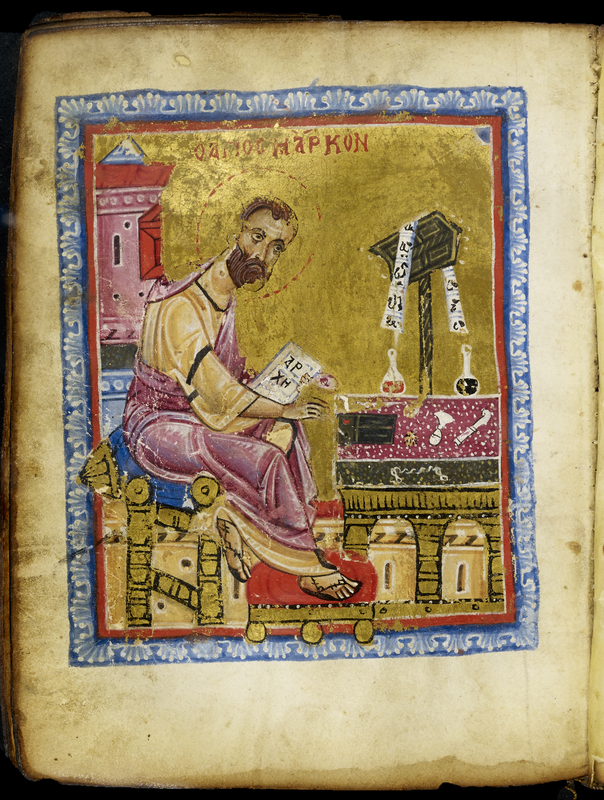
The New Testament

